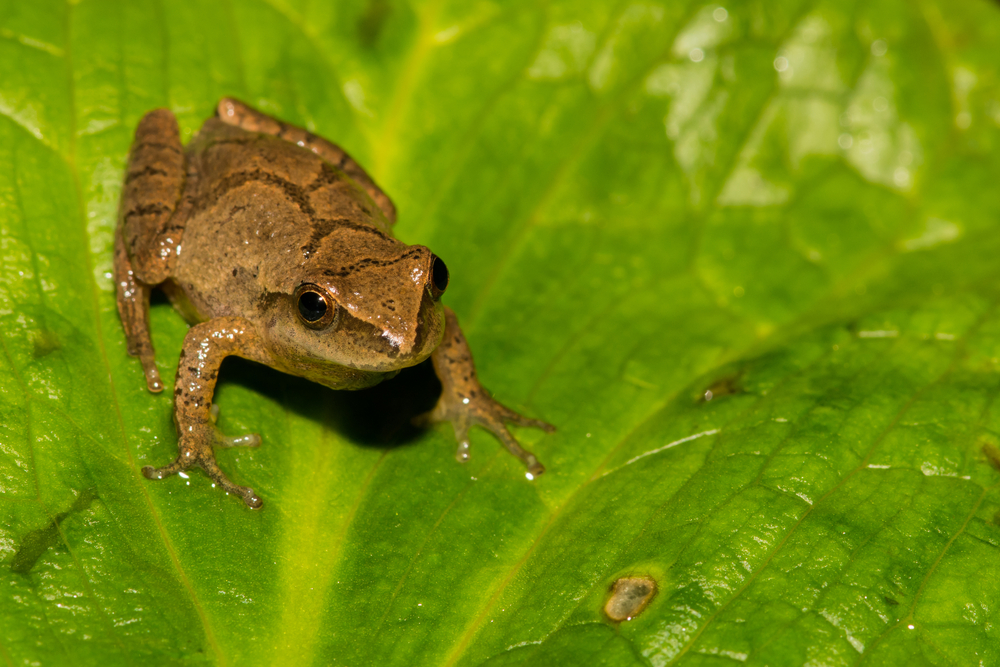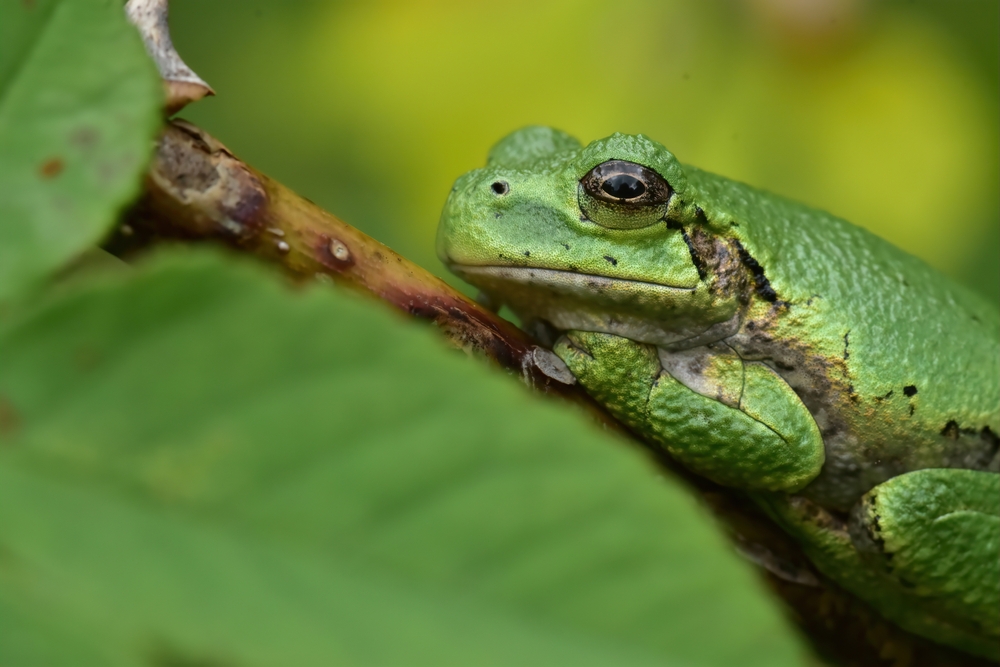Maine is a beautiful state home to several fascinating amphibian species. While most frogs prefer to live their lives and lay their eggs in or near water, remaining low to the ground, not all do. Maine is home to two different native tree frog species who are quite comfortable leaving their pools behind.
Generally, frogs prefer freshwater environments with plenty of moisture, but they live all over the United States. This includes Maine, and this coastal state is home to two types of tree frogs. The Spring Peeper (Pseudacris crucifer) and the Gray Tree Frog (Hyla versicolor) both live in Maine.
Spring Peeper

Of the two tree frogs in Maine, the Spring Peeper is more challenging to locate. Although they are both prevalent, the Peeper is incredibly small!
Range
There are two subspecies of the spring peeper. In Maine, you’ll find the Northern Spring Peeper, but they are found all over the eastern part of the United States. They range as far as Texas to the east coast and from Florida up to Canada.
Habitat
Swamps, ponds, and moist, wooded areas. In Maine, there are plenty of wet, grassy woodlands. It’s tiny, usually not much longer than an inch, and its brownish gray camouflage is perfect for blending into the scenery.
Identification
The Spring Peepers are similar in appearance to the Gray Tree frogs. Their skin tone tends to be gray, brown, or orange-brown, with a slight yellow coloration on the inside of their thighs. They also have an “X” pattern on their backs.
The males of this species use their vocal sac to create a brief, distinct “peeping” sound, which they use to attract mates.
Diet
The Spring Peeper mainly feasts on a wide variety of insects. There are plenty to choose from in Maine, including snails, beetles, and spiders.
Reproduction
These frogs start breeding when the temperatures warm up in the spring. Typically, that will be between late March through June.
Gray Tree Frog
Besides the Spring Peeper, the Gray Tree Frog is also common in Maine. The name might be slightly misleading, as the Gray Tree Frog can come in various colors and is often mistaken for other common frog types.
Range
The Gray Tree Frog lives in almost the entire eastern half of the United States. Some range as far west as Texas and as far north as Canada.
Habitat
This sticky-footed amphibian prefers wooded areas, forests, and even some backyards. It mainly likes to spend its time in leafy branches and shrubbery. Thanks to its color-changing skin, it can blend in with the environment seamlessly.
Identification
These frogs can be many different colors, from green to gray to brown, or any combination thereof. Their coarse skin has dark stripes, and most have a white spot beneath each eye.
It’s also easy to identify the gray tree frog by listening to their mating call. It sounds like a loud, short trill or chirrup.
Diet
Like most frogs, this creature prefers the many insects that it can find in Maine. Larvae, snails, and spiders are all part of their diet. On occasion, it may even eat other, smaller frogs.
Reproduction
The Gray Tree Frog has a similar mating pattern to the Spring Peeper. The males will begin their mating calls shortly after hibernation in April or May. The exact date depends on the region and weather, however.
Facts About Tree Frogs in Maine
- Spring Peepers will call for mates in groups of three to make themselves easier to hear.
- Both the Gray Tree frog and Spring Peeper can freeze in the winter and thaw out in spring.
- Both of these frogs are essential predators and prey in the ecosystem.
Wrap-Up
Tree frogs are incredible creatures that have fascinated humans for generations. Some are brightly colored, while others are the subdued natural colors of their environment. There is an abundance of local wildlife in Maine and some wonderful species that thrive there.
